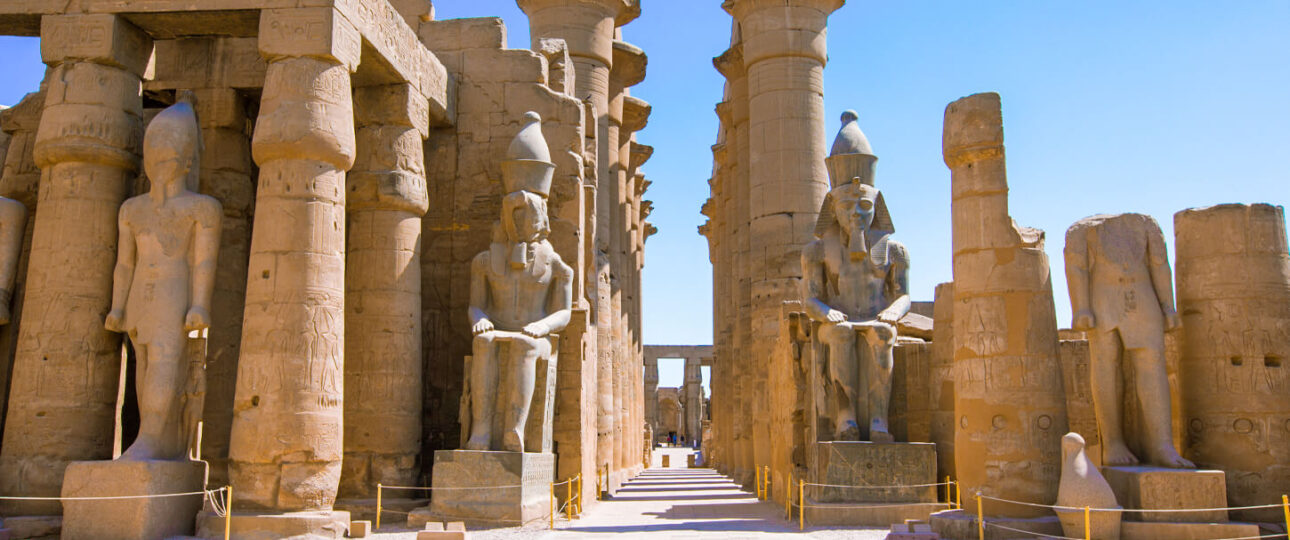Luxor Temple: Unraveling the Ancient Beauty of Iconic Monument
Welcome to the captivating world of Luxor Temple, an enchanting tower that is a testament to Egypt’s glorious past. Situated on the eastern bank of the Nile River in Luxor, Egypt, this architectural masterpiece has captivated tourists and history enthusiasts for centuries. This article will delve deep into Luxor Temple’s wonders, history, significance, architecture, and much more. So, please put on your explorer’s hat as we embark on a journey through time.
- Don’t miss out on our Best Time to Travel to Egypt
Luxor Temple: A Glimpse into Ancient Egypt
Luxor Temple, also known as the “Southern Opet” in ancient times, is one of Egypt’s most significant and well-preserved temples. Dedicated to the divine trinity of Amun, Mut, and Khonsu, this temple served as the focal point for the Opet Festival, an annual religious celebration that lasted for several weeks.
The construction of the Luxor Temple can be traced back to the New Kingdom period, with various pharaohs, including Amenhotep III, Tutankhamun, and Ramses II, contributing to its expansion and adornment over the years.
Unveiling the Architecture: A Marvel of Precision and Beauty
The architecture of Luxor Temple is a marvel to behold, reflecting the artistic and engineering expertise of ancient Egypt. As we step through the towering towers, we are greeted by colossal statues of Ramses II guarding the entrance. The temple’s design follows the traditional Egyptian layout, featuring a large courtyard, a hypostyle hall, and a sacred inner sanctuary.
The Hypostyle Hall: A Forest of Pillars
As we enter the hypostyle hall, we are surrounded by a mesmerizing forest of massive columns, each adorned with intricate hieroglyphics and carvings. These pillars served as structural support and symbolized the papyrus marshes from which the ancient Egyptians believed the world emerged.
The Colonnade of Amenhotep III: A Symbol of Power
The Colonnade of Amenhotep III, also known as the “Sun Court,” is a stunning addition to Luxor Temple. The court is lined with majestic statues of the pharaoh, presenting a powerful image of his reign and divine connection.
The Enigmatic Sphinx Avenue: A Path of Guardians
Luxor Temple was once connected to the Karnak Temple complex by an awe-inspiring avenue lined with sphinxes. As we walk along this ancient path, flanked by imposing mythical creatures, we can’t help but marvel at the ingenuity of the ancient architects who designed it.
Luxor Temple at Night: An Ethereal Experience
One of the most enchanting experiences at Luxor Temple is witnessing its grandeur under the cloak of night. Illuminated by a mesmerizing light show, the temple’s ancient façade comes to life, creating an ethereal ambiance that transports visitors back in time.
Luxor Temple’s Astronomical Significance: Aligning with the Heavens
The layout and orientation of Luxor Temple reveal a profound connection with astronomy. Its axis is aligned with the winter solstice sunrise, with the first rays of the sun illuminating the sanctuary’s inner sanctum on this significant day.
Luxor Temple’s Role in Ancient Egyptian Religion
Luxor Temple played a pivotal role in the religious beliefs of ancient Egyptians. It was believed that during the Opet Festival, the statues of Amun, Mut, and Khonsu would travel from Karnak Temple to Luxor Temple via the Nile, symbolizing the gods’ annual visit to their earthly realm.
Rediscovery and Restoration: Preserving Egypt’s Treasures
Throughout history, Luxor Temple endured various phases of ruin and restoration. During the Greco-Roman period, parts of the temple were buried under debris. However, the site was rediscovered and excavated in the 19th century, leading to extensive restoration efforts to preserve its magnificent heritage.
FAQs about Luxor Temple
What is the significance of Luxor Temple?
Luxor Temple is of immense religious and historical importance as it served as a center for the Opet Festival, a crucial event in ancient Egyptian spiritual practices.
Who built Luxor Temple?
Luxor Temple was constructed and expanded by several pharaohs, including Amenhotep III, Tutankhamun, and Ramses II.
What can visitors expect to see at Luxor Temple?
Visitors can explore the grand hypostyle hall, the Colonnade of Amenhotep III, and the enigmatic Sphinx Avenue, among other architectural wonders.
What is the astronomical significance of the Luxor Temple?
The temple’s alignment with the winter solstice sunrise showcases its connection to ancient Egyptian astronomy and religious beliefs.
Is Luxor Temple open for night visits?
Luxor Temple offers a mesmerizing light show at night, providing visitors with a unique and enchanting experience.
How can I get to Luxor Temple?
Luxor Temple is located on the eastern bank of the Nile River in Luxor, Egypt, easily accessible by various means of transportation.
- Don’t Forget to Explore Egypt’s Travel Tips
Conclusion
Luxor Temple is a timeless testament to ancient Egypt’s ingenuity and spiritual devotion. Its magnificent architecture, astronomical significance, and religious importance make it a must-visit destination for travelers and history enthusiasts. As you explore the wonders of Luxor Temple, you can’t help but feel a profound connection to the ancient past and the enduring legacy of this iconic monument.

